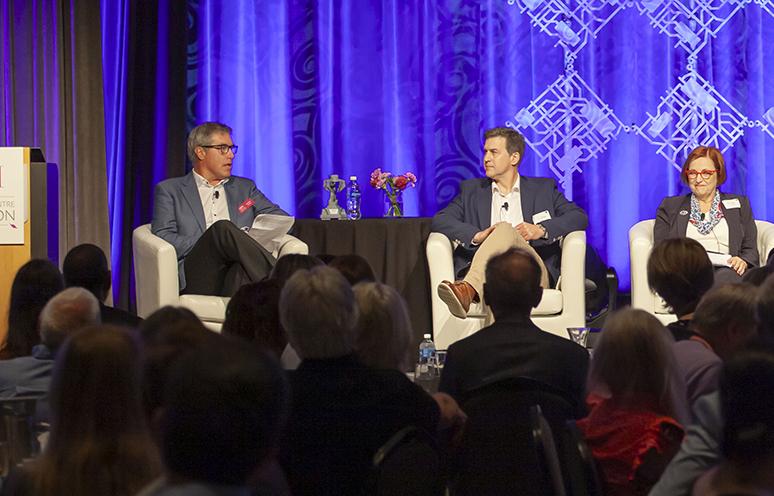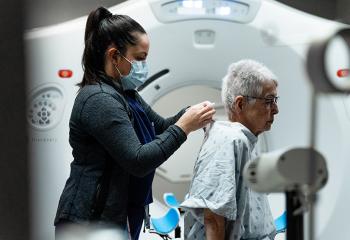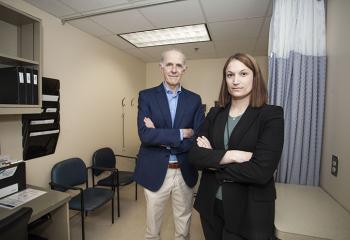
At a June QEII Foundation event, donors, clinicians and community leaders celebrated progress and showcased the next leap forward in Nova Scotia health care: the QEII’s Centre of Excellence in Robotics. It's the first of its kind in Canada. DARREN HUBLEY
Centre of Excellence in Robotics inspires new optimism
Robots might not have a heart, but they’re quickly becoming the heartbeat of the medical world.
At the QEII Foundation’s Inspiration Breakfast this summer, donors, clinicians and community leaders celebrated progress and showcased the next leap forward in Nova Scotia health care: the QEII’s Centre of Excellence in Robotics. It's the first of its kind in Canada.
Moderated by QEII Foundation vice chair Donnie Clow, a panel of QEII surgeons shared how robotics is reshaping their operating rooms.
The Centre of Excellence in Robotics (CER) is a partnership between the NS Health Innovation Hub and the QEII Foundation. It began in 2019 with the QEII’s first donor-funded robot and has already attracted more than $15 million in donor support.
“I like to think of the centre as an ecosystem with the patient at the centre,” says Dr. Gail Darling, head of surgery, QEII. “Robotic surgery ups every surgeon’s game. If we’re better, our patients are better.”
Similar to a university, the CER is a network of people, research, facilities and technology geared toward achieving better outcomes.
Today, six robots are in operation at the QEII — the highest robot-per-capita rate in Canada:
- da Vinci for delicate soft-tissue surgery
- Two Mako systems for joint replacements
- Mazor X for spine procedures
- ROSA ONE for neurosurgery
- Stealth AutoGuide platform for neurosurgery
Since 2019, QEII surgeons have logged nearly 2,000 robot-assisted procedures across prostate, kidney, gynecologic, ear, nose and throat (ENT), spine and joint surgeries, and neurosurgery. Collectively, these systems perform hundreds of procedures each year, generating invaluable data that fuels robotic surgery research.
WHAT IT MEANS FOR ATLANTIC CANADIANS
Robotics translate to precise incisions, faster recoveries and fewer complications. Shorter hospital stays free up bed space, precision cuts reduce pain and data from every case drives continuous improvement.
“It’s a workhorse,” says QEII urologist Dr. Greg Bailly of the original da Vinci system, which runs five days a week, 10 hours a day, performing everything from prostate cancer to complex hysterectomy surgeries.
“I don’t know anyone who wants to get better slower,” adds QEII neurosurgeon Dr. Sean Christie. “Robotics lets us send increasingly more spine patients home in two days.”
Best of all, it gives doctors the confidence to tackle the most challenging cases and gives them the ability to better plan surgeries in advance in a stress-free environment, before the surgery takes place in the operating room.
While the technology is beneficial now, its potential for improving future surgery is promising.
Robotic platforms may be compared to a black box, like in aviation. The platforms record every step of the operation, providing a data asset for each surgical case. This is part of the vision behind the Centre of Excellence — recognizing the value of the data and how it will impact the next generation of surgical innovation.
Beyond Halifax, the centre will train surgeons and nurses from other provinces, spreading expertise and wisdom across the region. Additionally, patients who once travelled out of province for advanced procedures can soon stay close to home and support networks.
ROBOTS POWERED BY PEOPLE
Building on momentum after reaching more than $15 million, the QEII Foundation has set a new $20-million goal to establish Canada’s first dedicated Centre of Excellence in Robotics.
Maritimers are offering unwavering support.
Philanthropists Tony and Julie Metlege jump-started the campaign with a $1-million lead gift.
Early believers, such as the Sobey family, who have donated more than $3 million to help bring the first robot to Halifax, also attended the Inspiration Breakfast.
“It’s very exciting ... to have the Sobey family here with us, because they’re the ones that started it,” says Sherry Porter, chair of the QEII Foundation’s We Are campaign, a $100-million campaign for transforming health care at and through the QEII Health Sciences Centre. The Centre of Excellence in Robotics is part of the We Are campaign.
AN EXCITING FUTURE AWAITS
Five of the six robots now in use are fully donor-funded and, as Dr. Darling notes, “We could easily use four more da Vinci robots and we’d have them working every day of the week.”
As the world shifts towards new and more efficient data-informed methods for everything from professional duties to everyday life tasks, robotics-augmented health care is shifting with it.


